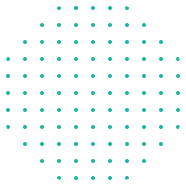Currently Empty: ₹0.00
How to Learn Computer Science from Scratch
₹11,786.00 – ₹39,124.00
How to Learn Computer Science from Scratch
Beginners Curriculum
- Introduction to computer
- Uses of computer
- Parts of computer
- Keys on keyboard
- Working with mouse
- Introduction to Paint
- Central Processing Unit
- Monitor
- Places where you can see the computer
- Introduction to windows
- Apps
- Paint
- Input devices
- Working principles of a computer
- Introduction to Logo
- Introduction Word Pad
- Computer Ethics
How to Learn Computer Science from Scratch
Your child will experience top-notch interactive online classes in computer science specifically designed for lower primary students in Grade 1 and 2. Our curriculum introduces computer science in a fun and engaging way, ensuring students receive personalized guidance from our expert instructors. The program covers essential topics such as an introduction to computers, their uses, and the various parts of a computer. Students will learn about the keys on a keyboard, working with a mouse, Central Processing Unit, and monitors and gain an introduction to Paint, start learning coding language Scratch.
This course focuses on what’s referred to as “block-based programming”, where the developer can drag and drop functions together to create scripts that complete tasks, whether they be simple or complex. This course starts out by teaching the universal basics about computer programming and then increases difficulty. In this How to Learn Computer Science from Scratch course, your child will learn to code, starting from the basic blocks. No kidding! Scratch, the programming language we use (developed by MIT), is so fun that it makes programming seem like a game. Your child will learn by doing. The course is designed so that your child can create the games and applications with their own two hands.
This will help students quickly master the basics. After this course, your child will learn text-based programming languages at a blazing speed and quickly make sense of any piece of code. The content is designed to be fun! Students learn to create animations and cool effects and create clones of some of the most popular games, such as Flappy Bird or Pac-Man. The games are handpicked to optimize learning computer science topics while having fun along the way.





